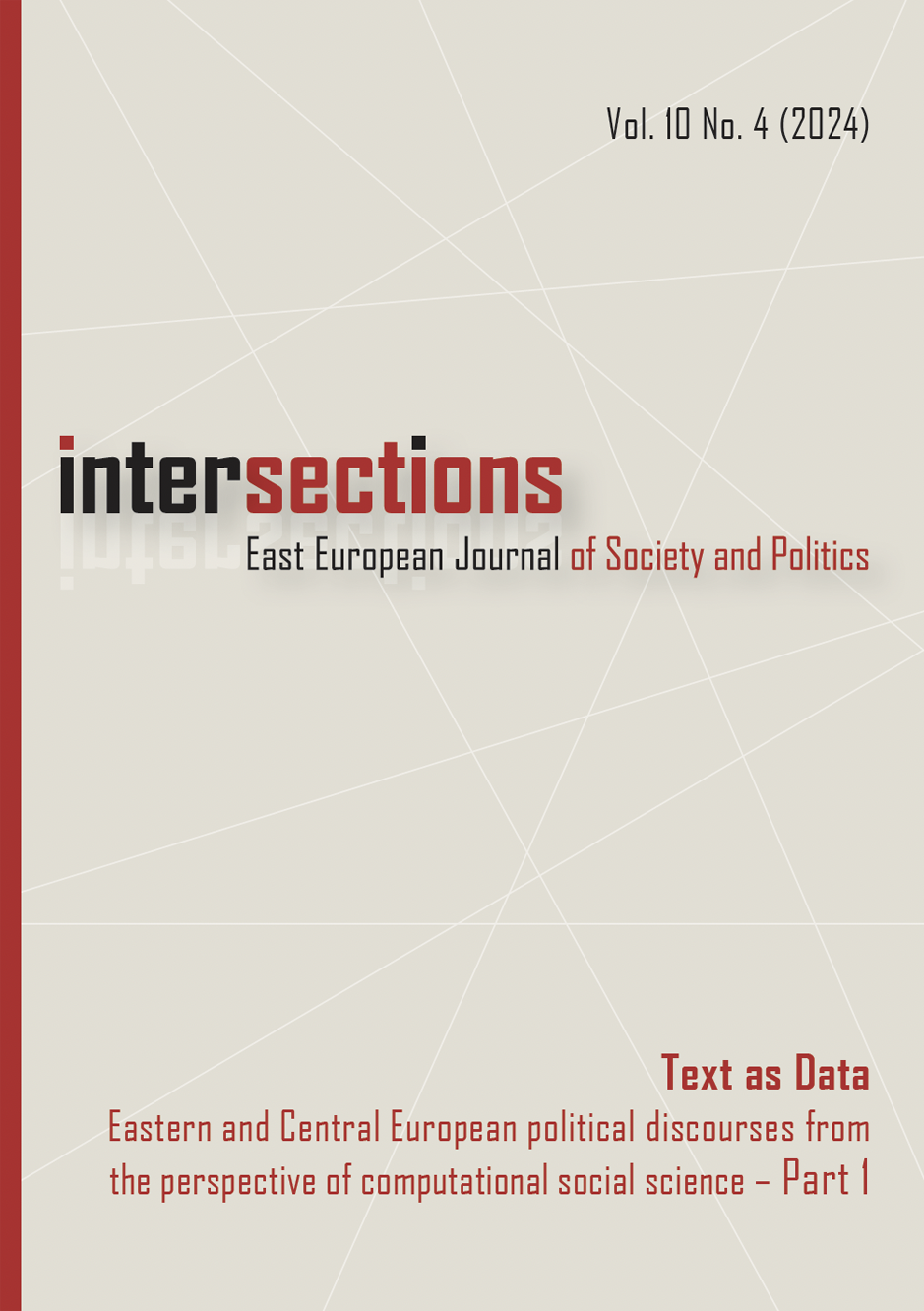Analysis of the populist discourse of the Lithuanian political parties
DOI:
https://doi.org/10.17356/ieejsp.v10i4.1209Keywords:
populist discourse, machine learning models, political parties, LithuaniaAbstract
This article aims to analyse the populist discourse of Lithuanian political parties over a 30-year period: 1990–2020. Since Lithuania belongs to the CEE region, the question arises whether it is witnessing a worrying rise of populism and a related backsliding of democracy. Although Lithuania is currently a stable consolidated democracy, the lack of a stable party system and clear ideological cleavages during the transition to democracy in the 1990s created a favourable environment for populism to flourish. In this article, we analyse the changes in populist discourse in Lithuania across different actors, sources and over time. This is done by applying machine learning models to identify populist content at the paragraph level through a corpus of political party manifestos, political party websites, and columns written by party members on Delfi.lt. The results show that, although elements of populist discourse are present in the texts of all Lithuanian political parties, the overall level of populist discourse has remained fairly stable over the period analysed, with a temporary increase in 2008–2009. We observe that populist discourse is more widespread in the media than in party manifestos and that non-parliamentary parties engage in this discourse more than their parliamentary counterparts.

Downloads
Published
How to Cite
Issue
Section
License
Copyright Notice
Authors who publish with this journal agree to the following terms:
Authors retain copyright and grant the journal right of first publication, with the work three months after publication simultaneously licensed under a Creative Commons Attribution License that allows others to share the work with an acknowledgement of the work's authorship and initial publication in this journal.
Authors are able to enter into separate, additional contractual arrangements for the non-exclusive distribution of the journal's published version of the work (e.g., post it to an institutional repository or publish it in a book), with an acknowledgement of its initial publication in this journal. This acknowledgement is not automatic, it should be asked from the editors and can usually be obtained one year after its first publication in the journal.



